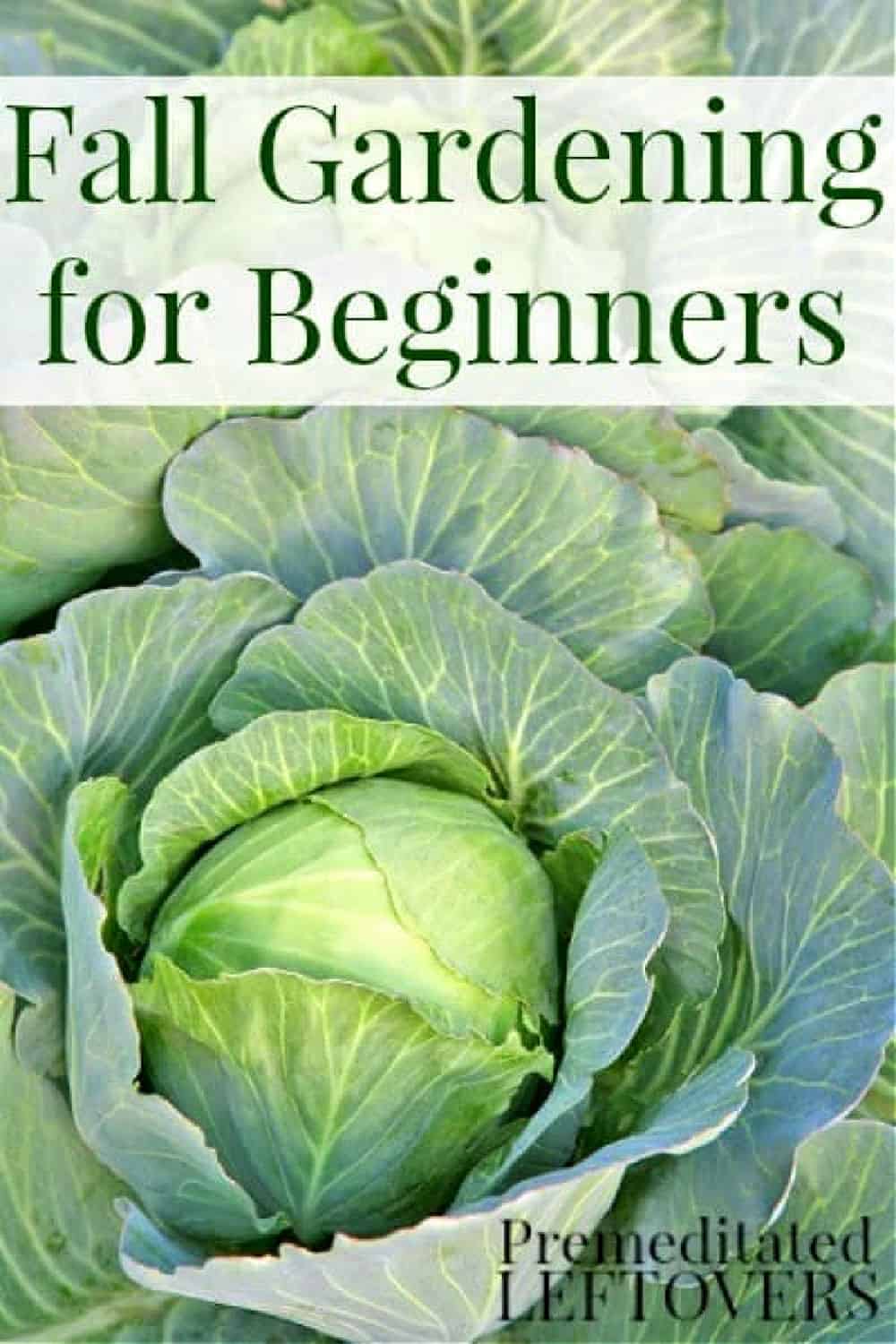Use these tips for Fall Gardening for beginners to choose the plants that thrive in cool fall weather.

With fall fast approaching and the cooler weather breezing in, it is time to start planning for your fall garden. Even if you have never gardened before, with these tips and tricks, you can have your first garden growing wonderful homegrown vegetables and beautiful flowers. As a beginner, learning how to garden in the fall is a great time to start as so many plants grow quite well in the cooler temperatures. Here are a few key tips for fall gardening for beginners.
Fall Vegetable Gardening for Beginners
Soil Prep
Clear the area that will be the location for your first garden. Remove any grass including the roots, other plants, rocks, and other debris. If you are growing into the ground, make sure to till the area is at least 6-8 inches deep. You can also build a raised bed, which is great if you have less than stellar soil. Whichever way you choose, make sure to add organic amendments to the soil like bone meal, blood meal, earthworm castings or bat guano. Water down the soil and then till it again adding more amendments. If you have enough time, let the soil rest for a few days before you begin planting.
Seeds vs. Transplants
For more variety and a better bang for your buck, choose seed packets. If you are short on time and need to get your garden planted right away, choose transplants. A combination of the two also is an awesome idea.
For fall vegetable growing, choose seeds for lettuce, spinach, kale, peas, carrots, radishes, and turnips. Choose transplants for slow-growing vegetables such as broccoli, cauliflower, and Brussels Sprouts. Most seed packets will tell you how far away to sow the seeds, with 4-6 inches being a good rule of thumb except for plants that get quite large like broccoli and cauliflower which easily need 12 inches in all directions.
Gardening Tips for Cool Weather Vegetables:
You don’t have to limit your fall gardening to vegetables; there are quite a few flowers that enjoy the cool weather. Fall flowers that do quite well are chrysanthemums, solidago, sage, helenium, pansies, snapdragons, and fall crocus.
Harvesting
After you have planted your garden and watered it every few days, you will see your plants grow and start producing edible leaves or setting out beautiful flowers or vegetables. With leafy vegetables, harvest the leaves every week as this signals the plant to produce more. With head vegetables, harvest the random stems that push up and then pick the head when it is at least six inches wide. Cut flowers as you need them for your inside vase!
Enjoy your fall garden this year and welcome to the club of happy gardeners!
More Fall Gardening Tips
Fall Vegetable Gardening Guide
Best Vegetables for Fall Gardening


Jelena says
Make sure your soil is not wet when you till it, that can ruin your soil structure, especially in finer, clay heavy soils. Good soil structure is important for water penetration and retention and for root growth. Till your garden when a handful of soil does not hold together after being squeezed in your hand.
Todd Charske says
Thanks good information!
– Todd Charske